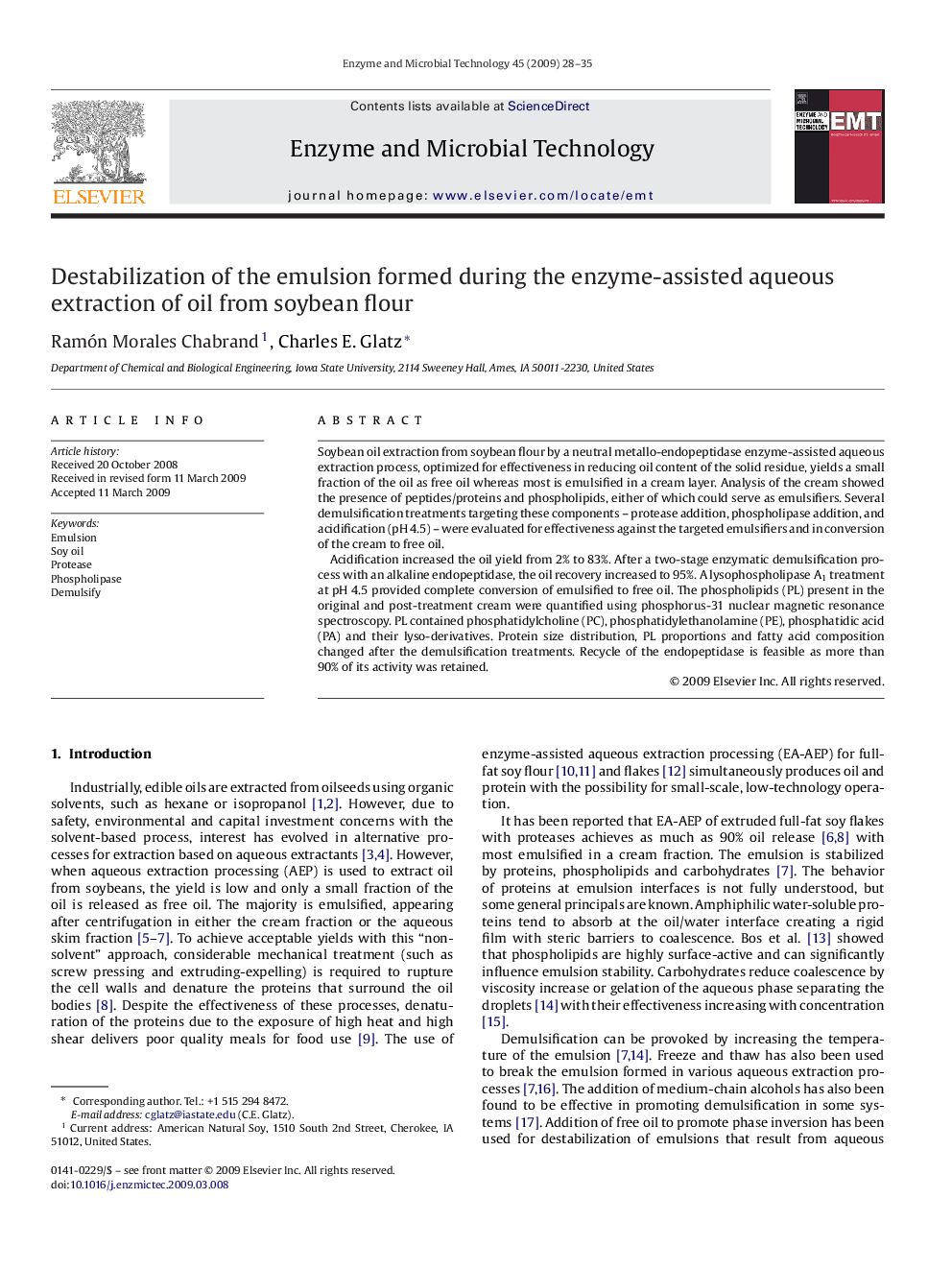| کد مقاله | کد نشریه | سال انتشار | مقاله انگلیسی | نسخه تمام متن |
|---|---|---|---|---|
| 17538 | 42676 | 2009 | 8 صفحه PDF | دانلود رایگان |

Soybean oil extraction from soybean flour by a neutral metallo-endopeptidase enzyme-assisted aqueous extraction process, optimized for effectiveness in reducing oil content of the solid residue, yields a small fraction of the oil as free oil whereas most is emulsified in a cream layer. Analysis of the cream showed the presence of peptides/proteins and phospholipids, either of which could serve as emulsifiers. Several demulsification treatments targeting these components – protease addition, phospholipase addition, and acidification (pH 4.5) – were evaluated for effectiveness against the targeted emulsifiers and in conversion of the cream to free oil.Acidification increased the oil yield from 2% to 83%. After a two-stage enzymatic demulsification process with an alkaline endopeptidase, the oil recovery increased to 95%. A lysophospholipase A1 treatment at pH 4.5 provided complete conversion of emulsified to free oil. The phospholipids (PL) present in the original and post-treatment cream were quantified using phosphorus-31 nuclear magnetic resonance spectroscopy. PL contained phosphatidylcholine (PC), phosphatidylethanolamine (PE), phosphatidic acid (PA) and their lyso-derivatives. Protein size distribution, PL proportions and fatty acid composition changed after the demulsification treatments. Recycle of the endopeptidase is feasible as more than 90% of its activity was retained.
Journal: Enzyme and Microbial Technology - Volume 45, Issue 1, 8 July 2009, Pages 28–35